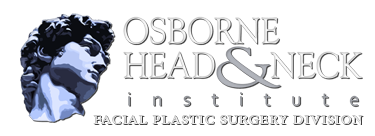Turbinate reduction surgery is a procedure that shrinks the turbinates in order to alleviate chronic nasal congestion and nasal obstruction. The turbinates are small curved bones that extend horizontally along the wall of the nasal passage. There are three sets of turbinates within the nose (inferior, middle and superior), which humidify and filter the air that is inhaled through the nose. The turbinates are useful in protecting the body against infections and irritants within the inhaled air and effectively direct the flow of air.
The inferior turbinate fills the lower portion of the nasal airway and can become very swollen in response to allergies or infections. Enlarged turbinates can cause difficulty breathing, chronic nosebleeds and chronic sinus infections as a result of airway obstruction.
When a patient’s turbinate is abnormally large and does not respond to traditional therapies such as antihistamines or antibiotics, surgical intervention may be recommended. Surgery aims to reduce the size of the turbinates while maintaining their function and relieve symptoms such as nasal drainage and post-nasal drip. This procedure may also affect conditions such as headaches, snoring and sleep apnea. Turbinate reduction is often performed in conjunction with a septoplasty to also correct a deviated septum.
Turbinate Reduction Procedure
During turbinate reduction surgery, an endoscope is inserted through the nostrils to provide visual access to the turbinates, resulting in no visible incisions on the outside of the nose. Dr. Hamilton then creates an incision in the turbinate to remove a small amount of excess bone or mucous membrane. This procedure may also be performed using laser energy. Turbinate reduction is relatively low-risk, although it may result in some dryness within the nose. In some cases, Dr. Hamilton may use cautery or radiofrequency treatment to stop bleeding within the nose.
Dr. Hamilton will determine the most effective surgical approach for your individual condition after a physical exam and evaluation of your medical history and overall health. Turbinate reduction is performed on an outpatient basis. It is important for patients to notify Dr. Hamilton of any medications you take before surgery, as you may be required to stop taking blood thinners, aspirin, insulin and others.
Recovery from Turbinate Reduction
After the turbinate reduction procedure, patients will likely experience discomfort in the treated area, which can be managed through pain medication prescribed by Dr. Hamilton. There may also be nausea, vomiting, dizziness and drowsiness after surgery. Nasal discharge is common as well and can lead to crusting around the nostrils. Your eyes may appear swollen or bruised, but this usually goes away on its own within a few days.
Patients will be instructed to consume a diet of only clear liquids for a certain period after surgery. Your doctor will provide several other postoperative instructions in order to promote proper healing. Patients will meet with Dr. Hamilton about a week after surgery to remove any packing or dressings and evaluate the healing process.
Risks of Turbinate Reduction
As with any surgical procedure, there are certain risks associated with turbinate reduction, including infection, bleeding, and inability to correct breathing abnormalities. Occasionally the turbinate tissue will re-grow and the surgery may need to be repeated. Your doctor will discuss these risks with you and answer any questions or concerns you may have prior to surgery. It is important to call your doctor at the first sign of abnormal side effects such as difficulty breathing, severe pain, fever, bleeding or others.
MEET our doctors TODAY. IN-OFFICE & VIDEO
APPOINTMENTS AVAILABLE
